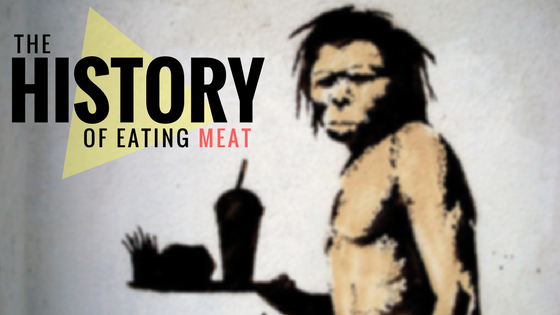Humans have been eating since our ancestors were living in caves 65 million years ago. Diets among animals and early humans were mostly vegetarian and vegan, specifically around the time of the dinosaurs. It was a slow transition into full carnivorous diets, while many animals were omnivores. Early humans had to slowly adjust their body to be able to fully digest meat of animals.
Many of our ancestors relied heavily on nuts and seeds to sustain their bodies. This type of diet actually prepared their digestive systems to consume various types of meats. The expansion of the small intestine is where the digestion of lipids take place and the shrinking of the caecum, where the fiber is digested, would ultimately prepare us for a carnivorous lifestyle. As well, the physical tools to break open nuts would be easily translated to use for opening carcasses. A tool once used to open a nut was then used to crack open an animal rib!
The biggest possible push for our ancestors to go out and hunt meat over grabbing a few berries could have been due to climate. As rains became fewer and fewer, fewer plant resources could have become less available. So, by 2.5 million years ago our ancestors not only had the tools to switch to animals for food, they also had the digestive system to do it.
The biggest unanswered question is what sparked early humans to actually go out and kill an animal for the purpose to consume it? They could have seen a saber-toothed cat eating a gazelle and got inspired by the idea. Even today, many strict herbivorous animals can be found taking a step into the carnivorous side. Herbivores such as cows or deer have been seen to eat live chicks to dead rabbits.
Meat eating is a practice that has been apart of humans for many years. Even the most strict herbivores of nature may be inclined to try a taste of meat. Whether you believe that humans should eat meat or not, we have been conditioned to digest it with the help of our ancestors trying new things.

